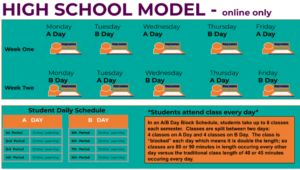Better Learning Online

Learning online is rapidly becoming part of every student’s day whether it’s a game on a smart phone, a workstation in a classroom, or an online course with a teacher at a distance. As full and part-time online learning becomes more ubiquitous, critics have become more vocal. Reports have criticized mixed results on traditional measures. State leaders press for effectiveness and efficiency.
Before addressing efforts to boost quality, it’s worth pointing out some of the unique challenges of learning online:
- Most students enroll late–65 percent says one national provider–and late enrollers perform significantly worse and withdraw at much higher rates than students that enroll on time.
- Providers receive little or no information about a student, particularly trend data (i.e., a learning trajectory).
- Online schools are often much larger and very diverse (i.e., it can be harder to make AYP with 5,000 than 500).
- Students not successful in a traditional setting enroll in online schools seeking an alternative. Districts complain about students returning from charters, but the same happens to online charters–11th graders with two credits show up and leave the enrollment records of the local school district.
- New students often perform very poorly (which may reflect prior achievement as well as new modality) and, as a result, the percentage of new students predicts performance.
- Students whose parents do not attend information sessions or meet with teachers withdraw at much higher rates (but providers typically can’t require an in person kickoff session).
- Some providers report that students that are not-proficient are more likely to re-enroll than if they are proficient suggesting that some parents just don’t want to be hassled about student achievement and leaving a small band of persistently low performer (but maybe that’s true for many schools).
- State models rating what is basically the same program report widely different results (e.g., see NCES report on differences in state growth models).
Like traditional schools, it’s clear that online learning doesn’t work for everyone. However, it would be difficult to mandate guided choice without erecting barriers to access.
There are some unique challenges, but the rapid growth of online learning requires collaborative efforts of policy makers and providers to promote quality outcomes.
Digital Learning Now recommends a rigorous authorization process, performance-based funding that rewards completion and achievement, and strong accountability systems that do no renew failing schools.
As part of an NCLB waiver, Minnesota introduced K12 Online Learning Performance Metrics Projects, part of a Multiple Measures Rating system. A dashboard approach like this may include measures of proficiency and growth, graduation and college readiness, achievement gaps.
There are two specific advances that will help boost quality of online and transitional schools. First, we need more discrete growth measures that measure growth to the course and even unit level and do it on an absolute (e.g., a Lexile scale) not just a relative scale.
Second, we need a national standard on an electronic student records. It’s time to push beyond the floor set by the Data Quality Campaign–state test scores and high school courses passed. A full gradebook of instructional and benchmark standards-based assessments should follow a student from grade to grade and school to school. (Watch for a white paper on this issue in October.)
Online providers capture a lot of data about students. As the U.S. education system shifts to personal digital learning, states, districts and foundations should consider research and development partnerships with online learning providers–they already live in the data rich learning environment of the future.
In summary, to realize the promise of online learning and help more students reach college and career readiness, states need to:
1. Use multiple measures that combine growth and proficiency
2. Conduct rigorous authorization
3. Enforce strong accountability
4. Develop better growth models
5. Require a gradebook of data follow students from school to school; and
6. Provide funding that promotes completion and achievement.








walden student 1
Hello,
Thank you for sharing this valuable information. It seems we do need to first find out what makes a student successful and unsuccessful so that we can guide people in the right direction. I have met some people that think online learning is ineffective and some others that think online learning is not for them for one reason or another. I think opinions are great but the data about online learning cannot be refuted, therefore we need to collect good and valuable data to better information others about this awesome educational option.
Also, I would have guessed many of those statements about the unsuccessful learners. I think that most people that enroll late do so because they are hesitant, forced by others, or not invested in the education. Some may even think that online learning is the easy way out. Also, if you’re unsuccessful in the traditional setting then most likely you will be unsuccessful in the online setting unless it was interpersonal skills that held a person back.
My only concern about online learning is the lack of face to face contact time and real life collaboration that is required at most jobs. Many supervisors have realized that getting along with others is an important skill just like knowing how to do the job. In some cases interpersonal skills may be more important.
What do you think about that?
Replies
Tom Vander Ark
We could use better data about learning online. The observations I shared are from one state virtual school: on avg, kids score at about state avg, but kids come in at very low levels and start late; returning students do much better than state average--those differences are very important. Better ability to measure and compare value-added data will help.
One recently district online learning director said last week, "We think we do a great job of teaching 21st century collaboration, much better than a traditional school." While providers vary considerably, the level of personalization and collaboration in an online class can be very high. That said, most students (>85%) will learning in blended environments that combine online & onsite in interesting ways.